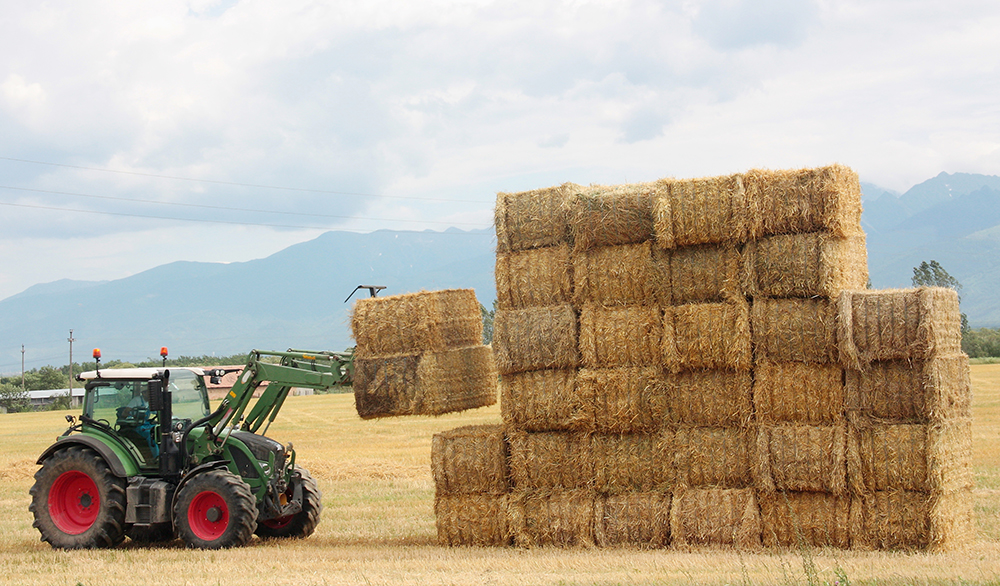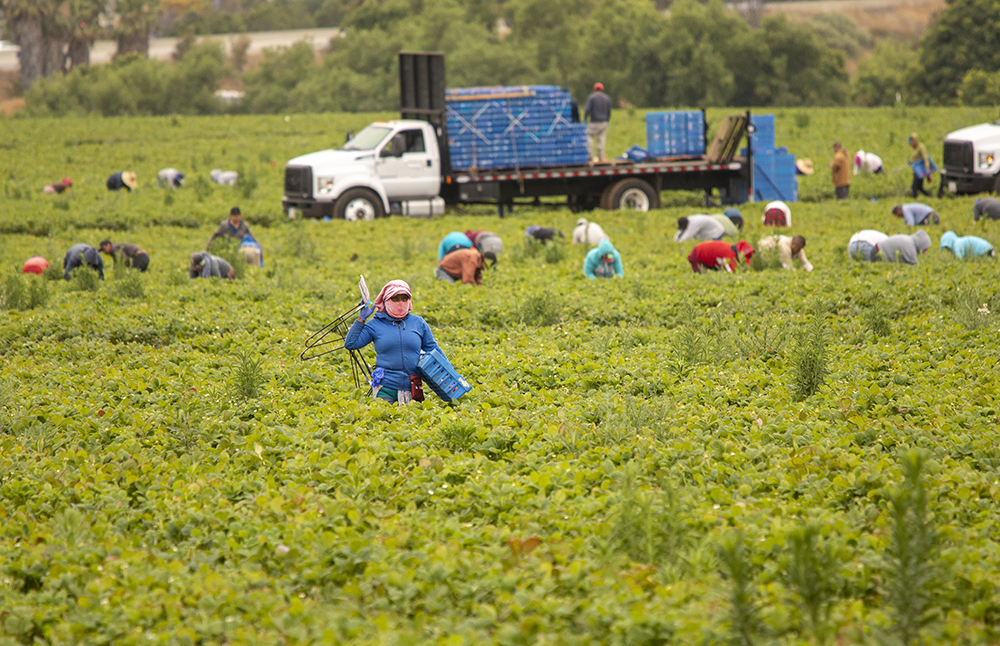
Farm safety protocols beginning to mature
By Jack Burton
Pandemic a catalyst for improvements in agricultural sector

Machine safety is responsible for 70 per cent of on-site farming fatalities each year. (sal73it/Adobe Stock)
In occupational safety, the agricultural sector stands as one of the more complex industries due to its position at the intersection of a number of intricate safety factors including livestock, labour, mechanical operation and mental health.
While the emphasis brought by the pandemic onto the whole of workplace safety has done little to curb this complexity, it has provided a necessary catalyst in growing and maturing the attitudes and protocols around safety on the farm.
It is this array of safety factors that make up the focus of this year’s Canadian Agricultural Safety Week, March 14 to 20, which sees safety organizations across the sector educating the wider industry about the various safety issues across agriculture.
This year, the Canadian Agricultural Safety Association (CASA) in Winnipeg has chosen to focus on resilience and wellness as it relates to worker safety.
Communications co-ordinator Robin Anderson believes the focus on well-being to be “important in maintaining a safe and strong farmer, and therefore a safe and strong farm.”
The Canadian Safety Council (CSC) in Ottawa is taking a more fundamental approach, making this year about machine safety — an issue that continues to be responsible for 70 per cent of on-site farming fatalities each year.
Canadian Agricultural Safety Week will put focus on farms
Unique workplace, hazards
Aside from the volume of obstacles to safety associated with the farming environment, another significant reason for the complexity of agricultural safety is the unique context of the work, which finds farmers and workers existing not only in rural — often insular — communities, but ones where the lines between home and work life are blurred.
Farm workers tend to be “very hard-working and independent,” said CSC national projects manager Lewis Smith.
Because of this blurring, there exists a tendency — especially where daily tasks are concerned — “to feel more comfortable cutting some corners because they’ve done the same many times before without incident.”
These circumstances makes the act of developing robust and actionable safety education plans an essential duty of safety professionals for both cultivating mindfulness of these issues and protecting workers in this sector, according to Smith.
“We can’t and shouldn’t treat safety as something to be rushed through, taught once, then forgotten,” he said. “Safety education needs to be reinforced, and that’s the biggest challenge facing workplace safety on the farm.”
Changing attitudes around safety
The task that agricultural safety professionals have of growing safety into something comprehensive and commonplace on the farm isn’t achieved just through updating procedures, but also addressing longstanding attitudes across the industry.
It’s a much-needed conversation; buy-in begins with understanding why safety is a priority on the farm, said Robert Gobeil, agricultural health and safety specialist at CASA.
“To be point-blank honest, safety in agriculture — the way that safety professionals look at health and safety — it’s in its infancy; it’s at least one generation behind other sectors like construction.”
Like Smith, Gobeil believes these attitudes come from the informal “mom and pop” nature of the work. Though overall intentions of workers and employers may not be directly negligent, a culture resistant to safety protocols can emerge from these ideals.
“With safety being such a new thing in the sector, it’s a tough conversation to have still, to some degree,” he said.
This resistance isn’t specific to one level of the industry, either.
“The employer often does not want to adopt a safety management system because of the cost and how it takes away from their perceived productivity,” Gobeil explained, noting that at “the worker level, it’s extra duties put on the worker — in their opinion — a lot of the time.”

The safety of migrant workers has come into focus as a result of the COVID-19 pandemic. (F Armstrong Photo/Adobe Stock)
COVID uncovers gaps
These critical gaps in agricultural safety were showcased this summer, following a series of high-profile COVID-19 outbreaks across the sector, with many of the cases concentrated amongst the migrant farmworker populations in southwestern Ontario.
“The worst-case scenario was somewhere around 1,800 cases that occurred in agriculture, so that’s probably close to 10 per cent of the cases WSIB (Workplace Safety and Insurance Board) would recognize (despite the fact that) farming generally makes up two per cent of the employment,” said Dean Anderson, strategic advisor of agricultural initiatives at Workplace Safety and Prevention Services (WSPS) in Mississauga, Ont.
These outbreaks, according to Anderson, came from a mixture of lax policies in keeping potentially infected third-party personnel, such as delivery drivers, from being exposed to working environments, and the shared living spaces of the workers that allowed this exposure to spread.
Approaching another farming season amid the pandemic, a number of policies have been developed by federal and provincial governments in response to these gaps.
Among them is the Prevention, Control and Outbreak Support Strategy for COVID-19 in Ontario’s Farm Workers, developed by the Ontario Ministry of Agriculture, Food and Rural Affairs (OMAFRA).
The strategy is comprised of 35 new protocols, along with a number of additions to existing government strategies, which aim to “address the unique impacts of COVID-19 to our sector,” according to OMAFRA media relations strategist Christa Roettele in Guelph, Ont.
Since the project’s November launch, Roettele confirms steady progress has been made.
One area of progress pursued by the strategy is safer housing, achieved through the formation of the Housing Working Group — a new initiative made up of government and industry groups — that aims to reassess the housing and safety issues that exacerbated the spread in the summer.
Another need is accessible safety education, which OMAFRA has responded to by collaborating with the Ontario Vegetable Growers’ Association to develop a comprehensive health and safety toolkit that aims to maximize access for foreign workers by being free, online, and available in a number of different languages.
Self-care for farmers
While those initiatives target safety gaps that are visible to those outside of agriculture, the Prevention, Control and Outbreak Support Strategy also offers a digital first-aid kit for an issue in the industry that’s a little less obvious: mental health.
The unique relationship that farmers have to their work “can make it difficult to identify and manage stress and accommodate the necessary self-care for managing stress,” said Roettele.
Meanwhile, in line with their theme of resilience and well-being for Canadian Agricultural Safety Week, CASA’s Gobeil admitted “there’s a big stigma and stereotype in the agricultural sector, where a lot of the older generations just do not want to talk about mental health; they bottle things up.”
A work culture discouraging openness around one’s feelings does not mix well with the physical isolation of the lockdowns that many across the country are experiencing, often leaving agricultural workers without their primary outlet for social and emotional relief.
“Just on a personal mental health note for the farm operator or the worker, it’s that isolation — where you can’t visit your family or friends,” Gobeil said.
“A lot of farmers already live in relatively isolated communities, but having these provincial restrictions in place of tent visits outside of your household, or really restricted group sizing, things like that, it puts extra stress on the way the work is done.”
Despite the backseat that mental health has taken in the agricultural industry, Gobeil believes that “society has definitely come a long way in the last generation or so, and people are starting to open up more.”
This increased openness, he said, is the key solution to normalizing the mental health discourse.
“It’s a matter of reaching out more, to be honest. It’s just that promotion and realization that everybody has problems occasionally, we all do, and it’s just a matter of saying ‘Hey, I have an issue, I could use some help.’”
Jack Burton is a freelance writer in Toronto.